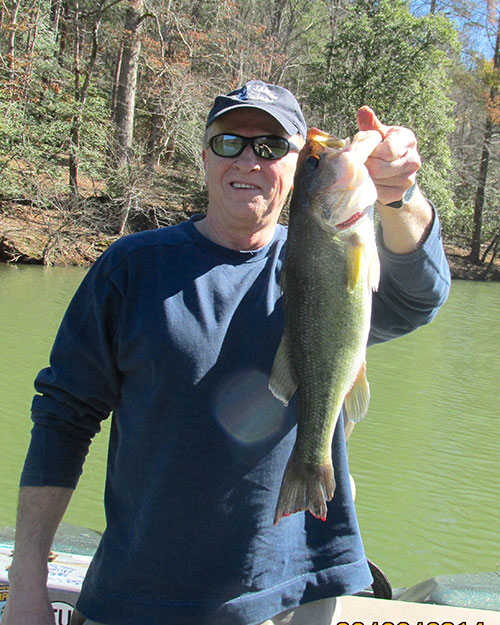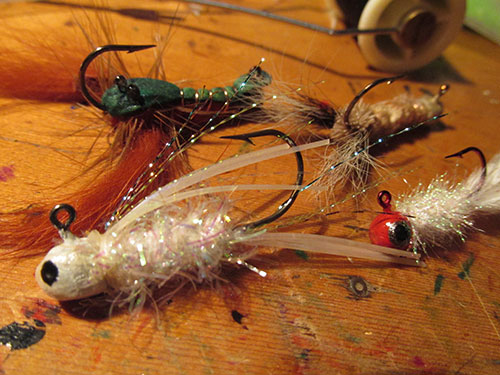When most anglers hear the word “jig”, they automatically think of 1/4 through 3/4 oz. bass jigs with assorted plastic trailers and weedguards. However, there’s another collection of jigs that require some finesse while fishing – they definitely are a step up from the standard crappie jigs, which can be inferior because of the minimum materials used, and the placement of them.
Full-bodied jigs with tails that match the length of the body, resemble minnows, crayfish, the young of panfish and gamefish, larva, and most all, aquatic life found in our waters. The best sizes are 1/32, 1/16, 1/8, and 1/4 oz. Use the same materials mentioned in my bass bug article in the July issue of The Angler Magazine WNC, minus the deerhair.
To imitate crayfish, use olive and burnt orange since that is the prominent color of them in our area. Some of the B.A.S.S. pros have secretly been using them for years in tough tournament situations, and have just recently admitted to fishing with them. I asked a customer of mine, Zane Allison from Marion, N.C., how he fished jigs this time of year. He said, “The amount of rainfall we receive determines how I fish them. If the rains come with a constant inflow of fresh water, a lot of bass stay shallow in creeks.” If not, he focuses on points and ledges using a 1/2 or 3/4 oz. football jig in green pumpkin or a 3/8 oz. black hair jig. I’ve also seen this pattern work in the past.

Also, due to the scant weight of the jig, it is harder for a bass to shake it out. They don’t have any leverage. Compared to the average lure that anglers use, a jig is much smaller and substantially lighter, resulting in no treble hooks to hand or foul on cover or line. You’ll waste less time untangling line and lures and more time fishing.
If you have not done so yet, I strongly suggest keeping a fishing journal. Way back in the day, I thought I could remember everything concerning a fishing trip. Not hardly! I have now kept a very detailed journal for the past 11 years, and it has proved to be invaluable. Under the column, “lures used,” Jigs ranked a close second to soft plastics in numbers of fish caught. I’ll take those numbers anytime.
The jigs mentioned in this article are available at The Rod & Fly and at Foothills Marine on Hwy. 181 in Morganton, N.C. Try to attend Riverfest at Lake James Paddy’s Creek State Park on September 16, 2017 from 10:00am to 3:00pm. There will be food, free music, children’s activities, and vendors. I will be there with a fly-tying demonstration. Hope to see you there!
Paul is the Owner/Operator or The Rod & Fly in Morganton, N.C. Visit his store or give him a call at (828) 433-9747. He now offers
fly-tying and fly-casting/fishing lessons in his store.
